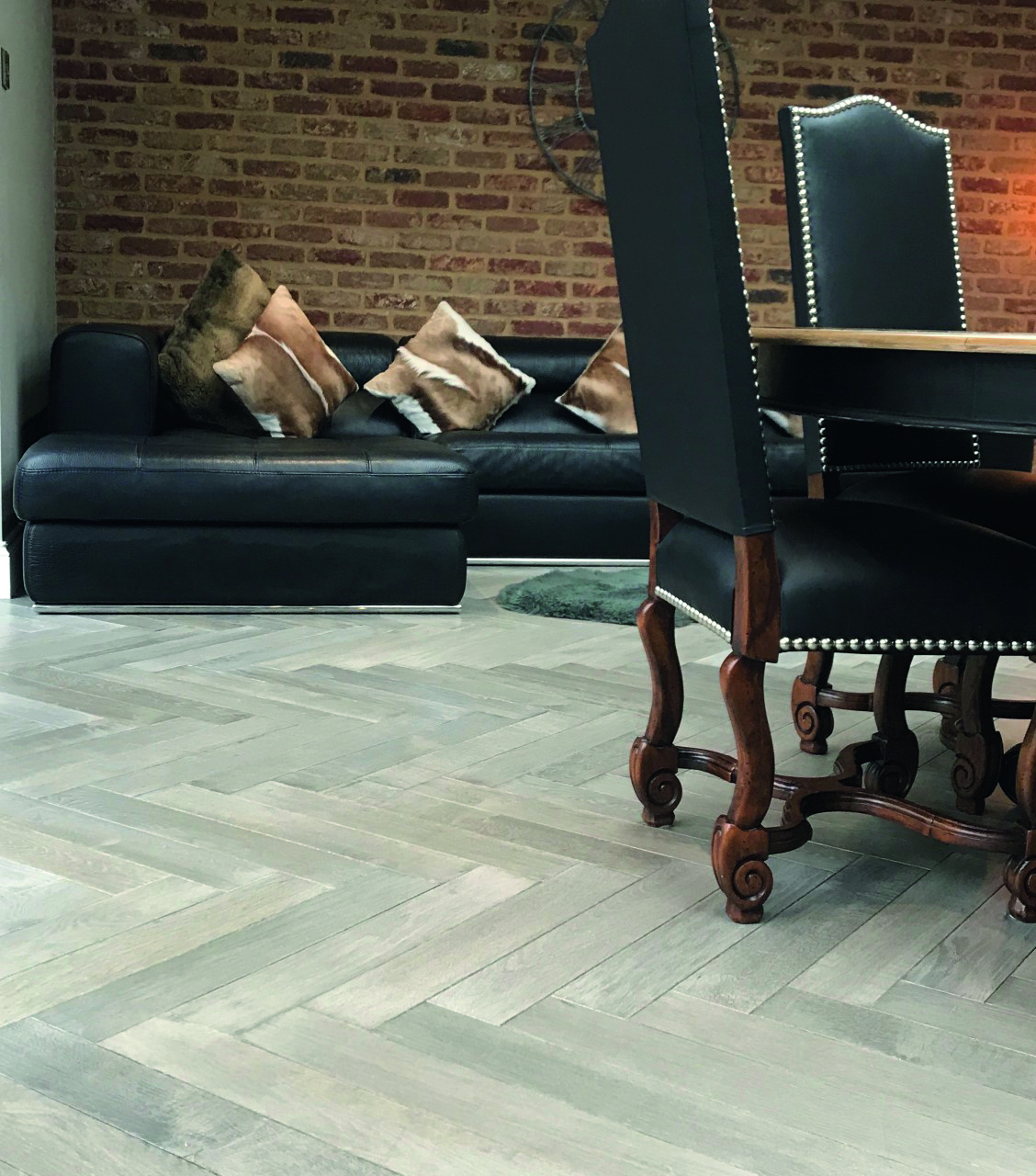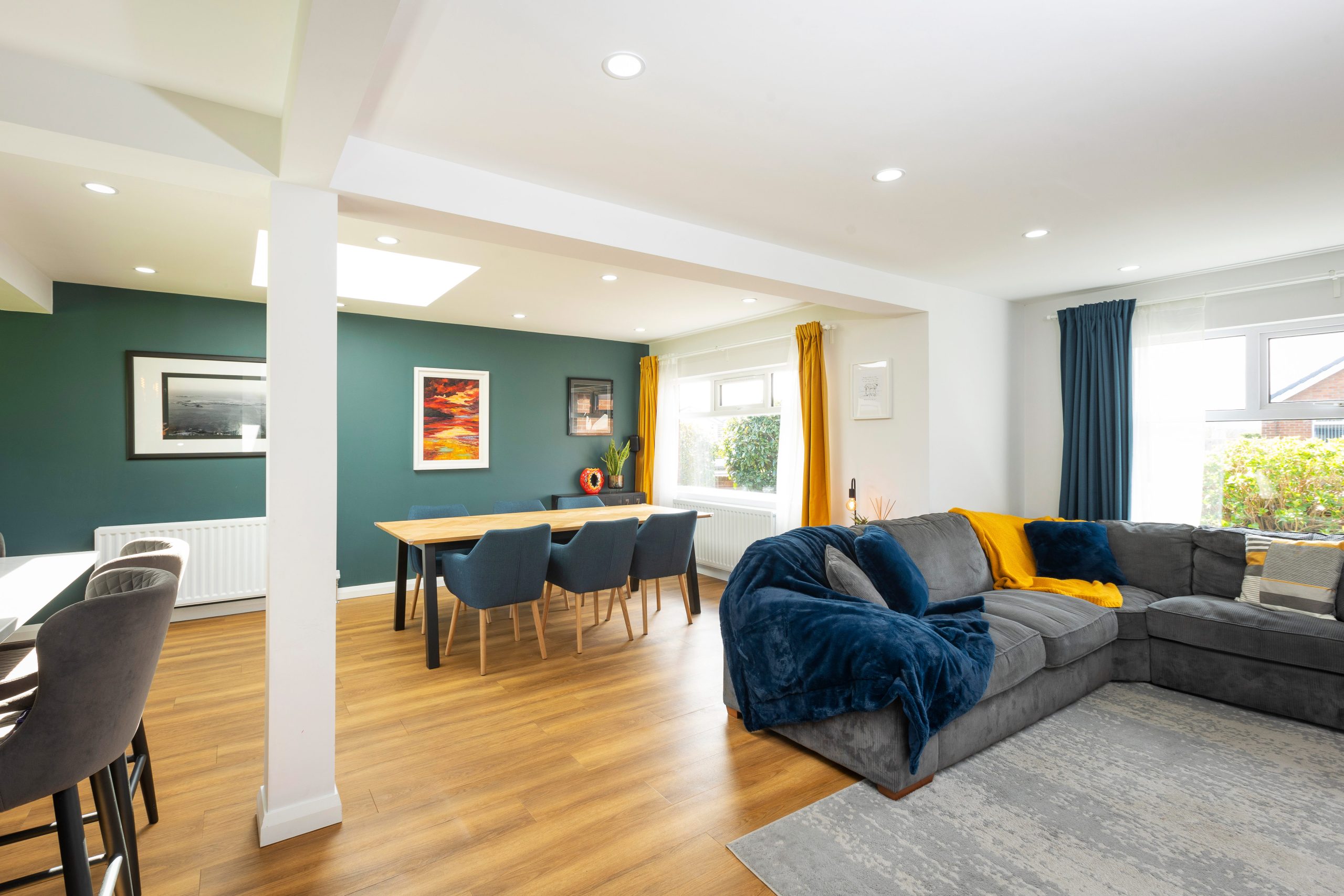Setting the Tone
When it comes to interior design, few elements are as crucial as the choice of flooring. Your floor not only provides a foundation for your room but also sets the tone for the entire space. Whether you’re looking to create a cosy living room or a functional kitchen, your flooring selection plays a pivotal role. In this guide, we explore three popular flooring options suitable for a wide range of spaces: Vinyl, Linoleum, and Laminate. We’ll delve into their characteristics, benefits, and considerations to help you make an informed choice for your home.
Linoleum and Its Eco-Friendly Appeal
If you’re inclined towards eco-friendly choices, linoleum (often referred to as “lino”) might be the right flooring option for you. Linoleum’s eco-credentials stem from its main ingredient – linseed oil, extracted from flax seeds. In 1863, Mr. Walton pioneered the process of mixing linseed oil with wood and cork flour, affixing it to a flexible backing to create linoleum.
Modern production methods have refined linoleum, making it readily available and affordable. Linoleum offers several advantages, especially in wet areas like bathrooms, where traditional wood flooring might not be suitable. It also boasts exceptional durability, making it a popular choice for commercial environments. Additionally, its versatility makes it a compelling option for children’s bedrooms and play areas.

Luxury Vinyl Tiles (LVT): A Modern Flooring Marvel
While Mr. Walton was busy developing linoleum, Frank Furness was experimenting with a new flooring material – Polyvinyl Chloride (PVC), commonly known as PVC. In the 1960s, luxury vinyl tiles (LVT) emerged as a modern flooring choice. Today, LVT comes in various shapes and sizes, including tiles and strips. Its construction typically involves multiple layers, ensuring a flat surface, while photographic images beneath a protective wear layer create an attractive and durable finish.
LVT shares a key advantage with linoleum – suitability for wet areas like bathrooms. Its robustness also makes it a practical option for kitchens and utility rooms. Many LVT products mimic the look of costly wood flooring designs, such as herringbone and panelled floors with borders. This allows you to achieve a similar aesthetic at a fraction of the cost.
Preparing for Installation
Proper preparation is vital before installing either LVT or linoleum over a concrete screed floor. Ensure the subfloor is flat, level, and free of imperfections that could affect the final finish. If necessary, use a levelling compound to rectify any surface irregularities. Additionally, confirm that the screed or compound is entirely dry before proceeding with the flooring installation. Follow the manufacturer’s instructions for acclimatising linoleum, a natural product.
To achieve a secure bond, adequately prepare the surface for adhesive application. Most adhesives are solvent-free, but consult your flooring supplier for product recommendations. If your subfloor is porous, consider sealing it with a PVA coat or proprietary sealer before applying adhesive. Addressing these details during installation ensures a trouble-free flooring experience.
Thoughtful Layout for a Harmonious Space
Effective layout planning is essential for both LVT and linoleum installation. Consider factors such as the room’s primary light source and entrances and exits. Properly positioned joints and texture patterns on the floor will benefit from direct light along their length, minimising shadowing. By aligning the layout with the room’s design elements, you can achieve a visually pleasing and functional result.
Laminate Flooring: The Affordable Elegance
Laminate flooring offers an affordable alternative to real wood flooring without compromising on aesthetics. It consists of a photographic design sealed with a resilient top layer and high-density fiberboard. Laminate floors come in a vast array of designs, shapes, and sizes, offering textured finishes that closely resemble authentic wood flooring.
Modern laminate designs have evolved significantly. They now feature high variations in wood grain patterns, eliminating the telltale repeating grain pattern that once distinguished laminate from genuine wood. This progress means that modern laminate floors offer a highly convincing alternative to traditional wood flooring.

Simple and Swift Installation
Laminate flooring installation is both quick and straightforward, especially when compared to LVT and linoleum. Laminate pieces feature a connecting edge that easily locks into adjacent pieces, known as a “click” system. This innovation has significantly reduced the need for adhesives during installation. Laminate floors are typically placed over an underlay foam, providing cushioning and sound insulation.
While ensuring a dry and flat screed remains essential, laminate floors can tolerate minor undulations in the subfloor. Acclimatisation and humidity checks are still necessary before installation, as per the manufacturer’s guidelines. When planning the layout, consider the direction of the planks, aiming for alignment along the length of the room. Expansion gaps, typically required between laminate floors and walls or protrusions, can be covered with matching beading. Alternatively, you can remove the skirting and run the laminate floor beneath it while maintaining the necessary expansion gap.
Choosing the Right Floor for Your Space
Your choice of flooring significantly influences the overall look and feel of your living space. Vinyl, linoleum, and laminate offer versatile options to cater to different needs and preferences. Whether you prioritise eco-friendliness, durability, or affordability, there’s a flooring solution to match your vision. By understanding the characteristics and installation requirements of each material, you can confidently select the ideal floor covering for your home, setting the stage for a comfortable and aesthetically pleasing environment.




